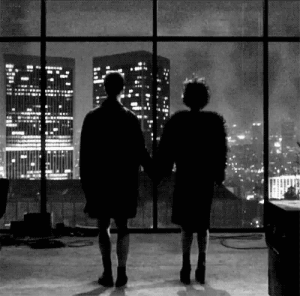It’s always interesting to see what was changed and what stayed the same when a movie is based on a book. After all, the source material is essentially the same, but even the most subtle differences can change the way the story is told or even the story itself.
 David Fincher’s 1999 movie “Fight Club” is based on Chuck Palahnuik’s book by the same name, which came out just three years before. The movie follows the same plot as the book, uses similar terminology (for example, all of the Fight Club and Project Mayhem rules are straight out of the book), and has the same characters. However, movie director David Fincher and screenplay writer Jim Uhls made five key changes to highlight different aspects of the story.
David Fincher’s 1999 movie “Fight Club” is based on Chuck Palahnuik’s book by the same name, which came out just three years before. The movie follows the same plot as the book, uses similar terminology (for example, all of the Fight Club and Project Mayhem rules are straight out of the book), and has the same characters. However, movie director David Fincher and screenplay writer Jim Uhls made five key changes to highlight different aspects of the story.
- How the narrator meets Tyler Durden: In the movie, the narrator finds himself sitting next to a flashy if fashionable man on an airplane carrying the same briefcase. Palahunik’s meeting between Tyler and the narrator could not be more different: the two meet on a nude beach, where Tyler is building a wooden structure that casts the shadow of a hand on the sand. In my opinion, Fincher and Uhls changed this meeting for several reasons. First, the airplane setting holds with the narrator’s insomnia-inducing lifestyle, while also breaking with the banal conversations he has earlier in the film, indicating that Tyler holds anti-conformist views that draw the narrator in. Additionally, Pitt’s fashion sense creates a parallel with Marla, an important motif throughout the film. Finally, the briefcase serves as a major first clue that Tyler and the narrator are in fact the same person.
- Marla’s suicide attempt: In both the book and the movie, Marla notices that the narrator has stopped showing up to the support groups. Wanting to get his attention, she overdoses on Xanax and calls him. In the movie, the narrator picks up the phone and listens to Marla talk for a bit before dropping the receiver, which Tyler then picks up. In the novel, the narrator never picks up the phone, Tyler does, beginning their affair. This key difference highlights the narrator’s choice not to go to Marla’s apartment and, arguably, his cowardice. It also sets up the antagonistic relationship between Tyler and the narrator over the affair with Marla, even though they are the same person: the narrator realizes that, had he gone to Marla’s place instead, he would be sleeping with her instead of Tyler.
- Lye burns: In the book, Marla burns herself with lye on accident. In the movie, Tyler holds the narrator’s hand and pours lye over it, holding it until the burn is deep enough to leave a scar. Tyler and the narrator’s matching scars are another clue that they are in fact the same person. The lye burns become a source of pain, like the fight club, to feel something different from the senseless modern lifestyle. (Fun fact, Brad Pitt asked his parents not to see the movie, but they insisted. They stopped watching after the chemical burn scene.)
- Tyler’s last planned explosion: In the book, Tyler’s final Project Mayhem endeavor is to blow up a skyscraper containing a national museum, taking himself out in the same explosion as a martyr. The bomb malfunctions because Tyler mixed paraffin in the explosives. In the movie, the targets are credit card companies. Fincher’s adaptation highlights the theme of consumerism in the story. With this explosion, Tyler wants to eliminate credit card records, and therefore credit card debt, returning everyone to a “clean slate.” This goes to the narrator’s wishes to re-create his own life, which he desperately tried to do by blowing up his apartment and starting a fight club in the first place. Unlike the book, the bombs go off, though it’s ambiguous whether the building the narrator is in blows up as well.

- The ending: In the book, the narrator blacks out after he shoots himself and wakes up in a mental hospital, convinced that he is in Heaven. The novel ends with the hospital employees revealing themselves to be Project Mayhem members, telling the narrator that they expect Tyler to come back. The movie has a much more, for lack of a better term, “Hollywood ending.” The narrator and Marla reconcile and hold hands as buildings blow up around them. The ending suggests that the narrator has finally killed the part of himself that was Tyler and is finally ready to start a new life with Marla. Conversely, the novel’s ending is cyclical, suggesting that Tyler will eventually return.
